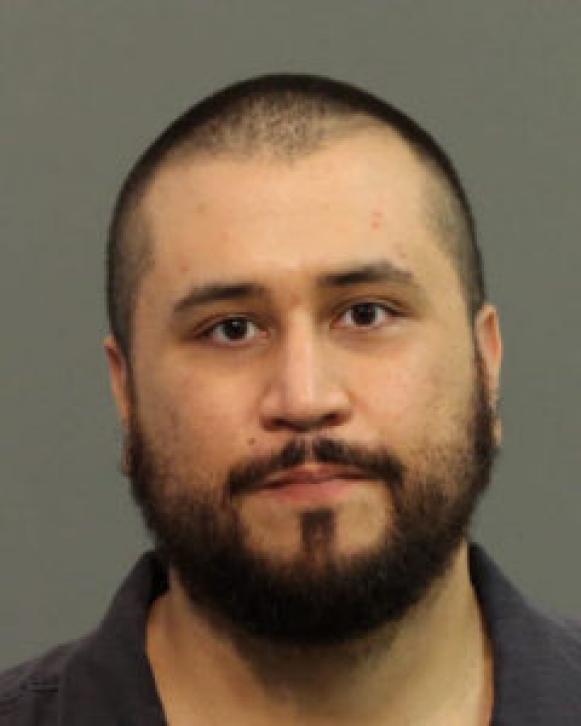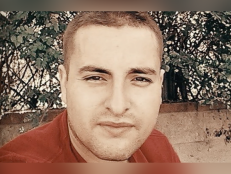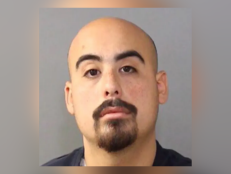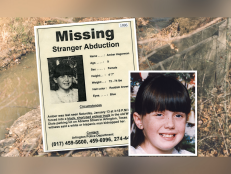A Man's Home Is His Castle: Byron David Smith's Thanksgiving Day Murders
![Byron David Smith's mug shots [Morrison County Jail]](http://investigationdiscovery.sndimg.com/content/dam/images/investigationdiscovery/crimefeed/legacy/2016/11/20161124_Screen-Shot-2016-11-22-at-12.51.46-PM.png.rend.hgtvcom.616.347.suffix/1536784808273.png)
Byron David Smith's mug shots [Morrison County Jail]
Byron David Smith (above), a retired security-engineering officer with the U.S. State Department, had dealt with his Little Falls, Minnesota, home being burglarized several times in as many months. He installed an alarm system, complete with video cameras aimed at several areas around his house. Then, on Thanksgiving Day in 2012, he sat in his basement with a rifle and waited.
The video from that day captures Smith moving his truck from the driveway prior to the break-in to make it appear as if he weren’t home. Then an hour later, two teens in hoodies can be seen casing the place before entering the property. The teens were Haile Elaine Kifer, 18, and her cousin, Nicholas Brady, 17, both of whom were unarmed. Smith had suspected Kifer and Brady of having been responsible for at least some of the earlier break-ins, and they were later suspected of a robbery of a retired schoolteacher that had occurred earlier that day.
While Smith sat in his basement waiting, he had a tape recorder running. There are hours of audio recordings that document his time lying in wait, complete with the sound of breaking glass and the ensuing confrontation. The audio captures the shots fired, and Smith’s statements during and after the killings. He calls Kifer a “bitch” and says, “Cute. I’m sure she thought she was a real pro.”
Then, after he’d delivered the final, fatal shot at close-range under her chin, he whispers to himself, appearing to practice statements he would give the authorities when they came:
“I refuse to live in fear. I am not a bleeding-heart liberal. I felt like I was cleaning up a mess . . .I was doing my civic duty . . . I don’t see them as human. I see them as vermin.”
Incredibly, despite the two dead bodies in his house, Smith wouldn’t actually call the police until the next day, stating that he didn’t want to bother them because of the Thanksgiving holiday.
His defense throughout the investigation and his trial was based on the “Castle Doctrine,” a 17th-century English common law that holds that individuals have the right to defend their property against a trespasser. In most states in America, this includes an individual’s right to defend a home or vehicle against any perceived threat, without the need to retreat first.
In 2005, Florida would be the first state to enact a “Stand Your Ground” law, which broadened the scope of the Castle Doctrine to include any space where an individual felt threatened rather than just an individual’s own property. The biggest difference between “Stand Your Ground” and self-defense is that the latter carries more burden on the accused to prove that they were not the instigator and that they made effort to retreat before determining there was a reasonable threat.

Seminole County Sheriff's Office via Getty Images
George Zimmerman
The most infamous Florida case tried under the “Stand Your Ground” law was that of Trayvon Martin, who was shot and killed by George Zimmerman, a neighborhood-watch captain in Sanford. Zimmerman, who had reported Martin to authorities as a suspicious person, would later be acquitted of the crime. A study published earlier this month in the Journal of the American Medical Association found that the “Stand Your Ground” law correlated to a 24.4 percent increase in homicides and a 31.6 percent increase in firearm-related homicides in Florida alone. The Tampa Bay Times has compiled more than 200 “Stand Your Ground” cases, searchable by various details including gender and race of the victim or perpetrator, location, or whether fatal or not.
Jeannie Suk, a Harvard Law professor who studies self-defense and criminal justice, says that the passing of “Stand Your Ground” laws in Florida and then the rapid succession of states who passed similar legislation was no accident. “The National Rifle Association at the time stated its intention to do it in Florida and then use it as a jumping-off point for a sweeping change in self-defense law across the country,” she says. “They were not at all shy or apologetic about that. This was the goal.”
In Texas, for example, Joe Horn saw two burglars break into his neighbor’s home. He called 911 and asked the operator if he should stop the burglars with his shotgun. The tape of Horn’s 911 call clearly showed that he was well aware of the new legislation: “The laws have been changed . . . since September the first, and I have a right to protect myself.” Despite the 911 operator telling him that police were on the way and that he should not act, Horn went to the house and killed the two men. He claimed self-defense and was not indicted when his case went before a grand jury.
In the 2012 shootings of Kifer and Brady, Smith showed a similar resolve to mete out what he saw as justice. “If you’re trying to shoot somebody and they laugh at you, you go again,” he said as justification for the additional shots fired on Kifer after she had already been incapacitated. At Smith’s trial, the jury considered the number of shots fired as excessive even under the Castle Doctrine. They also believed that Smith moving his truck to give his home the appearance of being abandoned, and thus lure the burglars to his property, counted as premeditation.
In April 2014, Smith was convicted of four counts of murder and sentenced to life in prison without the possibility of parole. One of the jurors would later say that it had been the audio tapes that had sealed the verdict for the jury. “We were dealing with a deranged individual,” the juror said.









![Keegan Kelley Harroz [left] and Barry Roland Titus II [right] were charged with triple murder in the deaths of Titus's ex-girlfriend and her parents.](http://investigationdiscovery.sndimg.com/content/dam/images/investigationdiscovery/crimefeed/legacy/2024/okmulgee-county-detention-center-keegan-harroz-barry-titus-20924.png.rend.hgtvcom.231.174.suffix/1707516057614.png)